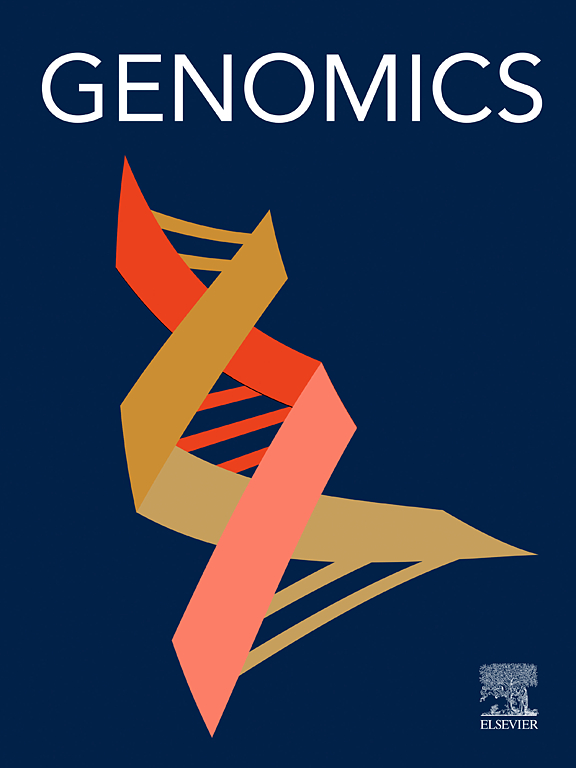Comparative transcriptome analysis revealed the molecular response mechanism of sugar beet (Beta vulgaris L.) against Cercospora Leaf Spot disease
IF 3
2区 生物学
Q2 BIOTECHNOLOGY & APPLIED MICROBIOLOGY
引用次数: 0
Abstract
Cercospora leaf spot (CLS), caused by the hemibiotrophic fungus Cercospora beticola (C. beticola), critically threatens global sugar beet production through defoliation and chlorosis, reducing root yields by ≤50 % and impairing sucrose crystallization. As fungicide resistance escalates in C. beticola populations, developing genetically resistant sugar beet becomes imperative. We dissected CLS resistance mechanisms via comparative transcriptomics of resistant (81GM241) and susceptible (KWS6661) genotypes across four infection stages (0–30 dpi). Resistant plants deployed a triphasic defense strategy: During early infection (10 dpi), rapid activation of phenylpropanoid biosynthesis, fatty acid elongation, and glutathione metabolism established dual barriers of lignin-mediated cell wall fortification and ROS scavenging. By mid-infection (20 dpi), pathogen recognition receptors triggered MAPK-WRKY cascades that amplified jasmonate-mediated defenses while mobilizing flavonoid antimicrobials. In late infection (30 dpi), systemic downregulation of photosynthetic antenna proteins redirected resources to tryptophan-derived phytoalexins, sustaining defense without growth penalties. Crucially, resistant plants proactively anticipated stress through coordinated calcium signaling (CDPK), pectin methylesterase-driven cell wall remodeling, and antioxidant activation before pathogen proliferation. In contrast, susceptible plants exhibited delayed ROS detoxification and impaired signal transduction. This phased defense architecture—initiating with pathogen recognition and transient oxidative bursts, progressing through sustained immune activation, and culminating in metabolic optimization—provides a molecular framework for breeding resistant varieties by stacking phase-specific defense regulators.
比较转录组分析揭示了甜菜(Beta vulgaris L.)对Cercospora叶斑病的分子响应机制
由半生物营养真菌甜菜Cercospora beticola (C. beticola)引起的Cercospora叶斑病(CLS)通过落叶和褪绿严重威胁全球甜菜生产,使根产量减少≤50%,并损害蔗糖结晶。随着甜菜种群中杀菌剂抗性的升级,开发具有遗传抗性的甜菜变得势在必行。通过比较四个感染阶段(0-30 dpi)的耐药基因型(81GM241)和易感基因型(KWS6661)的转录组学,我们剖析了CLS的耐药机制。抗性植物采用了三重防御策略:在感染早期(10 dpi),苯丙素生物合成、脂肪酸延伸和谷胱甘肽代谢的快速激活建立了木质素介导的细胞壁强化和ROS清除的双重屏障。在感染中期(20 dpi),病原体识别受体触发MAPK-WRKY级联反应,放大茉莉酸介导的防御,同时动员类黄酮抗毒素。在感染后期(30 dpi),光合天线蛋白的系统性下调将资源重定向到色氨酸衍生的植物抗毒素,在不损害生长的情况下维持防御。关键是,抗性植物通过协调钙信号(CDPK)、果胶甲基酯酶驱动的细胞壁重塑和病原体增殖前的抗氧化激活来主动预测胁迫。相反,易感植物表现出ROS解毒延迟和信号转导受损。这种阶段性防御体系——从病原体识别和短暂的氧化爆发开始,经过持续的免疫激活,最终在代谢优化中达到高潮——通过堆叠阶段性防御调节因子,为培育抗性品种提供了分子框架。
本文章由计算机程序翻译,如有差异,请以英文原文为准。
求助全文
约1分钟内获得全文
求助全文
来源期刊

Genomics
生物-生物工程与应用微生物
CiteScore
9.60
自引率
2.30%
发文量
260
审稿时长
60 days
期刊介绍:
Genomics is a forum for describing the development of genome-scale technologies and their application to all areas of biological investigation.
As a journal that has evolved with the field that carries its name, Genomics focuses on the development and application of cutting-edge methods, addressing fundamental questions with potential interest to a wide audience. Our aim is to publish the highest quality research and to provide authors with rapid, fair and accurate review and publication of manuscripts falling within our scope.
 求助内容:
求助内容: 应助结果提醒方式:
应助结果提醒方式:


